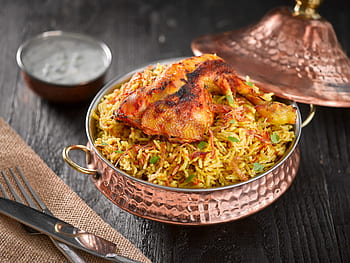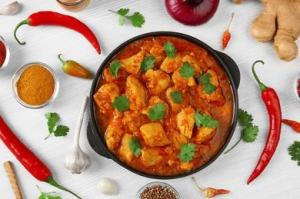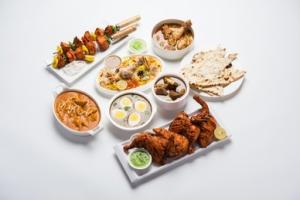In the nineteenth century, an anthology of recipes from the royal household of Nawab Sir Asman Jah Bahadur, the prime minister of Hyderabad was compiled by the manager of his kitchens, Ghulam Mahbub Hyderabadi. This cookbook was enormous. It included around 680 recipes and was titled Khwan Nemat-e-Asafiya or The Beneficient Table of the Asafiya Dynasty. The common name for Persian and Urdu cookbooks during this time was Khwan Nemat and would often be preserved in manuscript form in royal libraries. The Khwan Nemat-e-Asafiya was a staggering record of the eating and culinary practices of Hyderabad’s nobles and elites. Like most contemporary cookbooks of the time, there were within its pages recipes for a host of dishes like dals, samosas, biryanis, desserts, and kababs.
These cookbooks were like windows into the creation of Hyderabadi cuisine which was a perfect amalgamation of Turkish, Mughlai, Arabic, Telugu, and Maratha culinary practices. This particular Deccani cuisine was thus born out of dynasties like the Bahmani, Qutb Shahi, and the Mughal. A later spate of migrations from other regions like Iran into the city in the seventeenth and eighteenth centuries also changed the culinary horizons of Hyderabad.
The love affair of Hyderabad with the biryani is one of the most well-known stories in food history. It is claimed that the Nizam of Hyderabad’s kitchen could churn out 49 different types of biryanis. In the Khwan Nemat-e-Asafiya too, this love affair is well explored as around 26 pages of the cookbook are dedicated to the biryani. A vast number of biryani preparations are described in the text like the sheep head’s biryani, rumi biryani, Azam Shahi biryani, Shikampuri biryani, hazar afrin biryani, dum pukht biryani, sheep’s shoulder biryani among others.
The quintessential and recognizable version of the Hyderabadi biryani is prepared with mutton and a mix of spices, seasonings, and rice in a clay pot. It can be either kacchi or pakki biryani depending on whether the meat is cooked before adding to the rice. The diverse and distinct cuisine of Hyderabad is deeply influenced by the cross-currents of royal and migrant cultures which has helped in the evolution of a number of timeless and unique like dalcha, a mutton and lentil dish, boti kabab (small lamb pieces skewered and cooked in a tandoor after being marinated in curd) or pathar ka gosht, a mutton or lamb preparation prepared on a heated granite slab over hot burning charcoal.






















